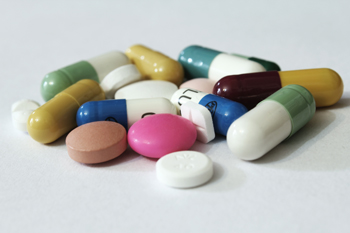 An average of 7.8 million viewers tuned in to watch events at Twickenham on Friday 18th September as the self-proclaimed third largest sporting event in the world, the Rugby World Cup, began.
An average of 7.8 million viewers tuned in to watch events at Twickenham on Friday 18th September as the self-proclaimed third largest sporting event in the world, the Rugby World Cup, began.
In the lead-up to the event – and amidst the current turmoil surrounding other elite sports such as athletics and cycling – World Rugby’s Anti-Doping Compliance manager, David Ho, has boldly claimed that the sport’s anti-doping programme is the envy of sports around the world.
Ho cites numerous reasons for this including an increased budget, the introduction of the athlete biological passport in 2014, and mandatory anti-doping education for players from under-20 level. The results appear to support Ho’s claim with only four positive tests from 2,100 elite samples taken in 2014 – less than one percent.
This however does not tell the full story. The timing of Ho’s proclamation coincided with the news that the 22-cap South Africa hooker, ‘Chiliboy’ Ralepelle, had been suspended for two years after testing positive for drostanolone, an anabolic steroid. And of course, some may argue that the lack of positive results simply indicates that elite athletes who choose to cheat are merely one step ahead.
While this positive test may be one of only a small number of exceptions at the elite level, further investigation of the sport closer to home reveals a slightly more disturbing picture.
Inspection of the UK Anti-Doping list reveals that of the 50 athletes and coaches currently serving bans for an Anti-Doping Rule Violation (ADRV), 16 are rugby union players. If we include rugby league, this figures rises to 29. The vast majority of sanctions are for the use of anabolic agents but the more surprising statistic is they are predominantly issued to players at lower levels of the sport. So what are the potential reasons for this?
Growing strong?
Research evidence indicates that during the 20th century the stature and weight of rugby union players increased significantly, with body mass increases far exceeding those in the general population of young males during the same timeframe. Since the game turned professional in 1995 this trend has continued. Evidence from 2002- 2011 shows that the average height and weight for elite players in England increased for almost all positions, with significant differences in weight evident for fly half and back-row forwards (Fuller et al., 2013).
An interesting case comparison to demonstrate this is the New Zealand World Cup winning squad of 1987 and the squad of 2015 – favourites to retain the title. In 1987, the average weight was 99.5kg and 79kg for the forwards and backs respectively compared to 113kg and 95kg in 2015.
When accounting for the importance of size, strength and power it is perhaps slightly less surprising that the majority of doping bans are issued to those players attempting to gain entry to the elite levels of the game. The pressures faced by young people aspiring to ‘make it’ to the pinnacle of the sport – including the need for players to become bigger and stronger along with the benefits and rewards – can lead some to take short cuts. These pressures are the precise reasons cited by Sam Chalmers, son of former Scotland and British & Irish Lions fly-half Craig, who received a 2 year ban after testing positive for two anabolic steroids at a Scotland under-20 training session in 2013.
So, in returning to David Ho’s comments, one factor above all else is clear: while there may or may not be a problem at the elite level of the game, alongside rigorous testing procedures, sanctions and campaigns, education must begin at the junior level for all players so that they are aware of the inherent dangers and consequences of doping in the sport. Only then perhaps can rugby address the issue of doping at all levels.
To learn more about sports and fitness, find videos, articles, games and free courses on OpenLearn.
If you're interested in studying Sports and Fitness with the Open University, explore more courses and qualifications we offer in this subject area.
This article was first published on the OU Sports & Fitness blog.
Rate and Review
Rate this article
Review this article
Log into OpenLearn to leave reviews and join in the conversation.
Article reviews